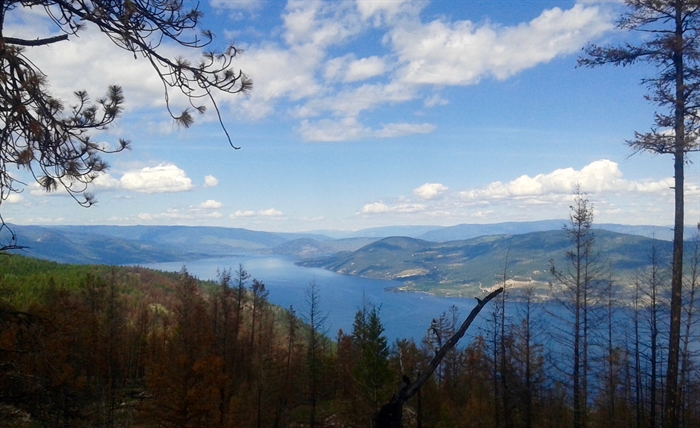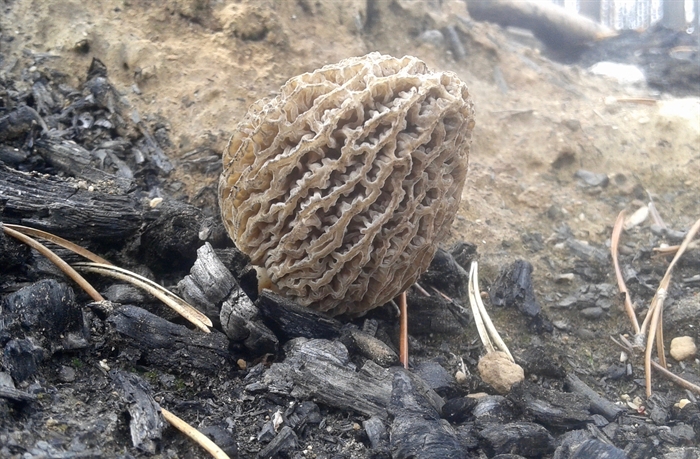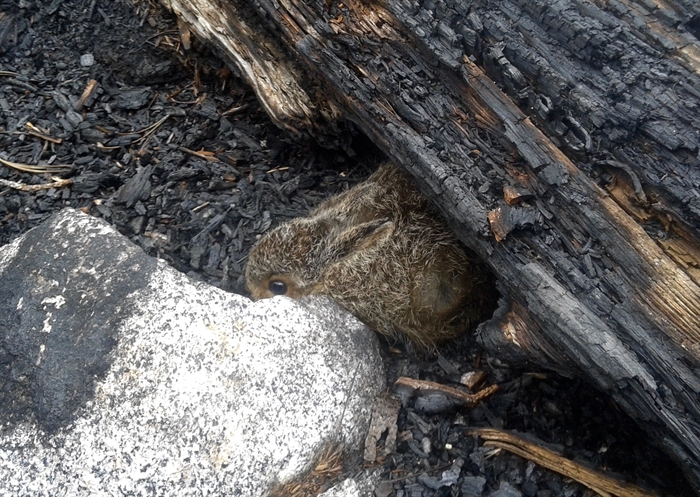
A view from the summit of the Westside Road-Finty fire that burned in 2015.
Image Credit: Scott Moran
August 24, 2016 - 1:49 PM
The 2016 wildfire season has been very mild in the Southern Interior. Only a few hundred hectares of land has burned in the Kamloops and Okanagan regions. This is great news for residents with health issues made worse by poor air quality. Last year was especially difficult for breathing with smoke crossing the border from over-sized fires in the United States.
Forest fires are a natural and important part of our local ecology. Two things are important to consider when pondering the nature of our forests. Logging has created an unnatural situation where trees are all the same age. In a natural forest, there is variety. Young trees, old trees and fallen trees are a perfect mix. The variety also comes from forest fires. Burned ground creates a natural barrier from future burns. Fires have natural limits because the forest might just stop, or be much older and resilient, or for many other reasons. We have lost this effect with modern forest management.
The only way to recreate natural forest conditions is through controlled burning. One reason we aren't doing this is because of the public outcry that it will affect those who already have difficulty breathing. Unfortunately, the fact is that eventually, all forests will burn. There is nothing we can do to stop it. We have good years and bad years, but it will all burn one day. It is best to accept that fires are not a natural disaster but an important part of our land. We have the ability to limit the size of these burns so that we don't get a situation with air quality that is out of control. I can empathize with those who would rather have no smoke, ever, but that is not realistic. At least we could have things on a schedule, so every year a person would know when the air will be a bit smoky. We need a controlled fire season, not just the wildfires. There is some controlled burning already being done, but it needs to happen everywhere, especially in the dry valleys.

A morel mushroom.
Image Credit: Scott Moran
What happened in Fort McMurray this spring was tragic. It must still be a shock to the residents of the town. There is a huge benefit that maybe hasn't been recognized yet. That region now has a huge barrier to future fires. It will be a long time before that burned forest grows to the point where it could ignite as it did. That fire was a statistical phenomenon. Unfortunately fires like that might be a new part of our reality, thanks to climate change. It was unique because of its size, and time of year. That is a very early fire. If the weather had been hotter this summer and that fire started in summer, I feel like we have a chance of losing the entire boreal forest. The image in my mind of ashes raining from the sky all over North America is from some apocalyptic movie. It is not far from reality, we could lose our largest forest in one fire. This would permanently alter our ecosystem in ways I would rather not think of. The boreal forest stretches from Northern B.C. to Ontario, all the way to the arctic tundra. I am thankful to know that there is a solid burned chunk of forest in Alberta dividing one side from the other.
A forest fire triggers an explosion of life the following the spring. Our wild plants and animals are adapted to thrive in a recent burn. If you didn't know, my day job is harvesting wild foods. I collect a few wild foods from recent burns, most notably, morels. There are a few delicious and nutritious leafy plants that can also found almost exclusively on burned ground (at least here in the B.C. Interior). Miner's lettuce is the best wild plant to make a mild salad with and there is an almost endless supply underneath the burned trees in the spring.

Miner's lettuce.
Image Credit: Scott Moran
I have seen many beautiful examples of vibrant animal life in these burned lands. Although I did not get a picture (for reasons that I hope are obvious) I stumbled upon a moose that had just birthed two calves. They were still wet. As soon as I realized what was happening I had to leave but it was the most incredible encounter I have had with wild animals in the 17 years I have been picking wild mushrooms in B.C. While in the Yukon harvesting morel mushrooms, it was hard not to step on the occasional bird making a nest in the dirt. They were very well camouflaged, and depend on the burned land for nesting each year. There are huge benefits from fires for all our critters (endless grazing on fresh weeds and grass), please keep this in mind when considering fires in our region.

A bunny the author spotted in a burnt out area of the forest.
Image Credit: Scott Moran
News from © iNFOnews, 2016